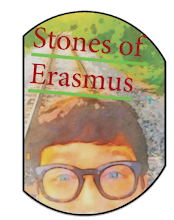Peek behind the scenes! Discover how I turn sparks of inspiration into engaging classroom resources.

A Writing Assessment I made for the Greek hero Perseus
Have you ever wondered how educational resources get made — the ones you find on Teachers Pay Teachers, Made by Teachers, or my blog Stones of Erasmus? Whether it's a freebie you love or a bundle you buy, there's a whole ecosystem behind the scenes. And while every teacher-author works a bit differently, I thought I'd lift the curtain on my creative process — from random idea to clickable download.
Let me take you through the ride. Buckle in.
Step 1: The Idea Vault (a.k.a. my Google Doc on Steroids)
It all starts with an idea — usually when I’m on the Q train or in between classes, or in line for coffee. I keep a living Google Doc titled “Content Creation Ideas” that I add to constantly. It’s a messy but magical place filled with sparks: “Ooh, this could be a cool writing prompt,” or “I need a better way to teach allegory!” Let’s just say … I have no shortage of ideas.
Step 2: The Sandbox – Where Ideas Become Real Resources
I call it “the sandbox.” This is where I play, build, and iterate. Here, I:
- Build out slides, PDFs, or Google Forms.
- Make crisp, clean illustrations with Illustrator.
- Clean up and make pretty public-domain images with Photoshop.
- Draft assessments and answer keys.
- Design for print and digital use.
- Differentiate content for different learning needs.
- Add enrichment features like further reading guides or vocabulary extensions.
This stage can take anywhere from two days to two weeks — or more if I’m creating something big (like my recent multi-day unit on the Iliad and the Odyssey).
Step 3: Securing the Files — PDF Magic & Editable Slides
Once the sandbox closes, I move into the technical zone. I use tools like Adobe Acrobat Pro to flatten and secure my PDFs. For digital resources, I lock down Google Slides so the parts I want to stay put stay put — and the parts you can edit stay editable.
Step 4: Listing It Online — Making the Storefront Shine
Writing the product listing means:
- Crafting an SEO-friendly title.
- Writing a clear, helpful description.
- Choosing keywords so other teachers can find it.
- Adding engaging thumbnails and previews.
This is where your resource enters the world.
Step 5: Marketing It — Without Feeling Like a Car Salesman
Once listed, it’s time to let people know! Sometimes, I write a blog post about the myth or topic I covered. I might email my followers or make a short video explaining how to use it in the classroom.
Marketing is about connecting: “Here’s something I made. I think it’ll help. Let me show you how.”
Step 6: Linking It All Together
This final step is about integration. I connect blog posts to store listings, products to related products — helping teachers find exactly what they need and improving visibility.
Final Thoughts
Making educational resources is part pedagogy, part creativity, part tech wizardry — and a lot of coffee. Every resource I share has gone through this journey. I hope knowing what happens behind the scenes helps you appreciate the labor of love in every clickable download.
If you're a fellow teacher-author: keep sandboxing, keep linking, keep creating. We’re building something meaningful.
Homer, Blind Poet
Of course, this post wouldn’t be complete without sharing one of my polished, ready-to-use resources. Click to download a two-day lesson introducing Homer, Blind Poet, with extension activities.
If you enjoy using my resources, drop a positive comment below about how you used it.
—
Greig Roselli
Educator, Writer, Mythology Nerd, and the Heart Behind Stones of Erasmus
PDF Copy for Printing












